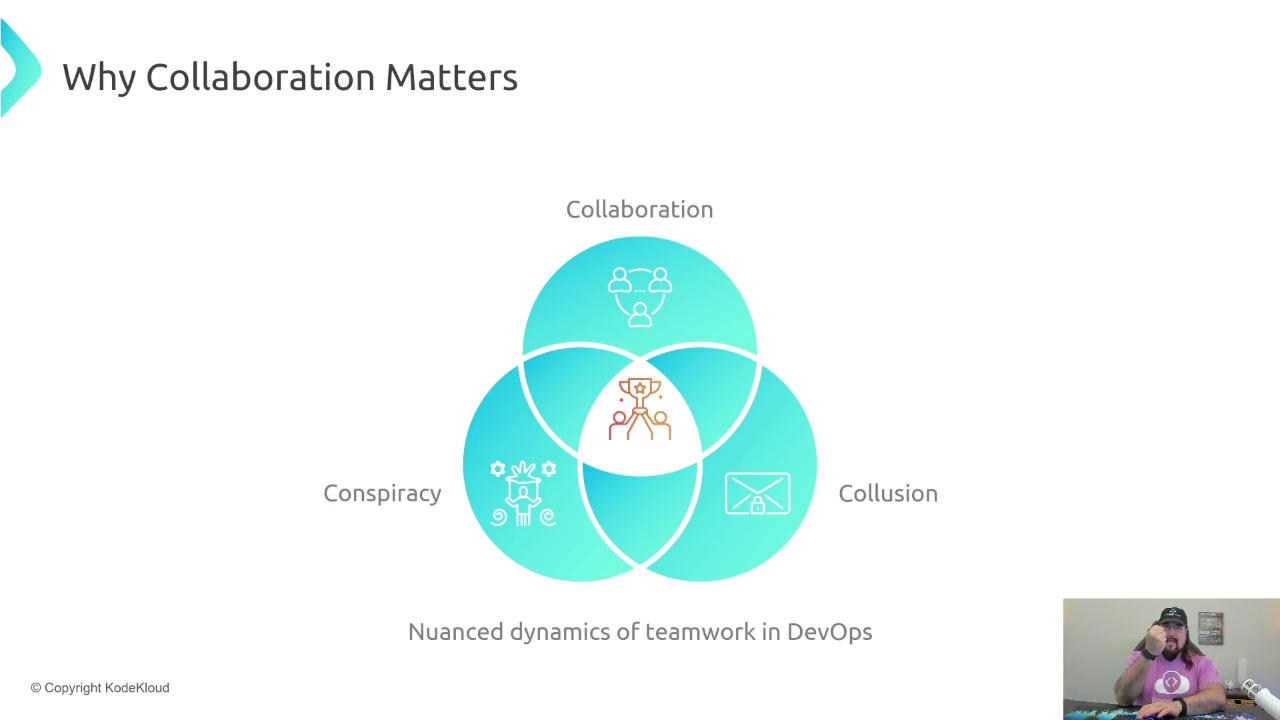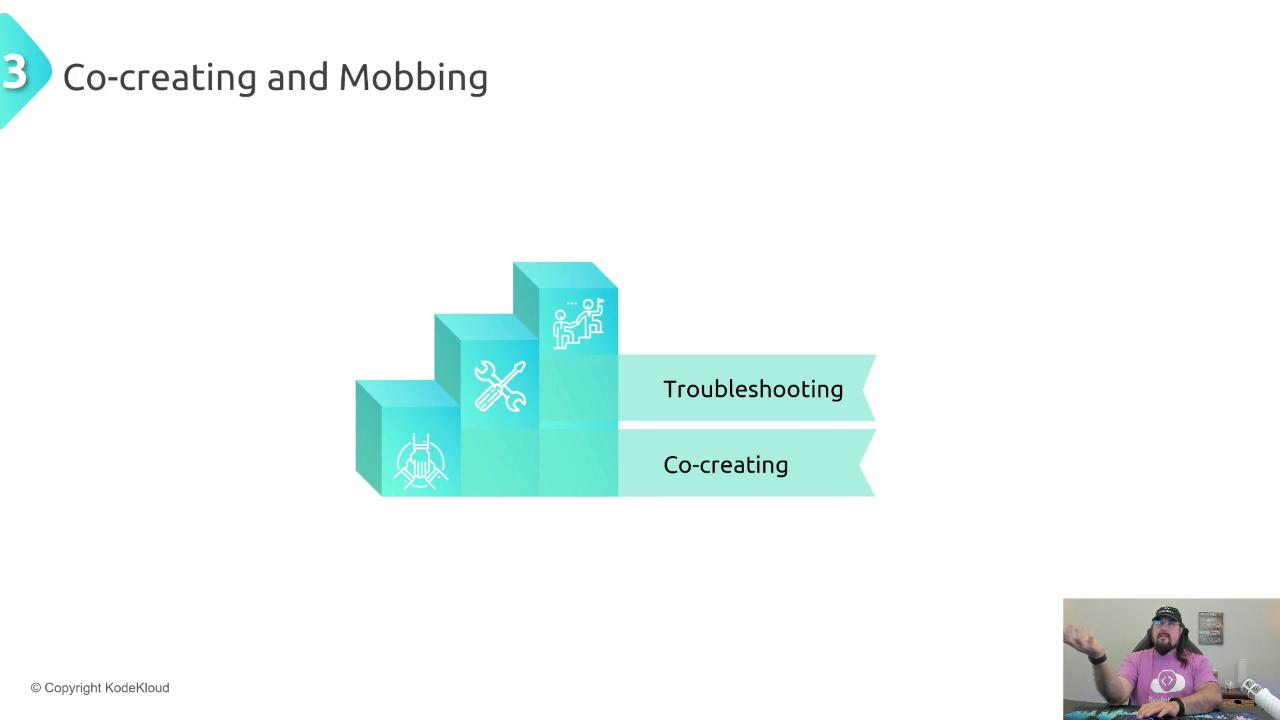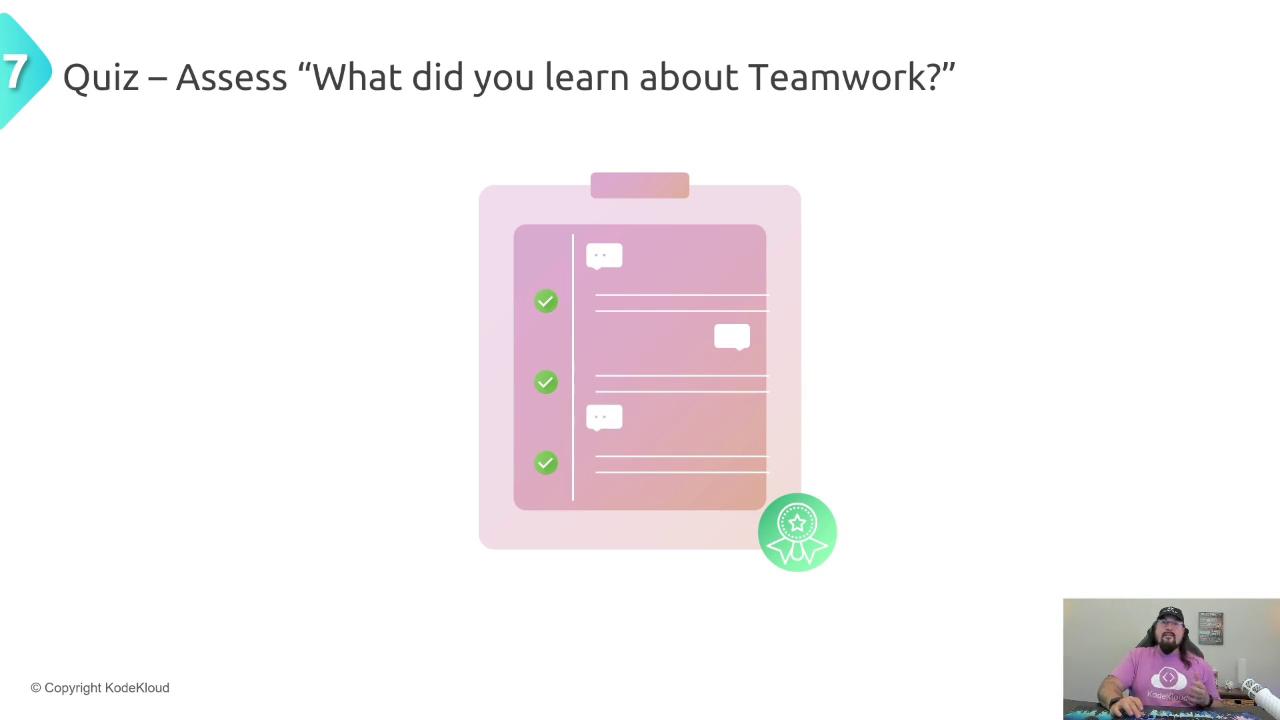Enhancing Soft Skills for DevOps Engineers: Essential Non-Technical Skills to Thrive
Collaboration Collusion and Consipiracy
Section Agenda
Welcome to this lesson by Michael Forrester. In this session, we’ll dive into the essentials of building effective DevOps teams—identifying healthy collaboration, avoiding unproductive collusion, and steering clear of misaligned conspiracy. By the end, you’ll have practical strategies for fostering respect, cohesion, and high performance in your organization.
1. Understanding Team Dynamics
True teamwork means working together toward a shared goal. In contrast, collusion and conspiracy introduce hidden agendas that erode trust.

2. Self-Assessment: Gauge Your Collaboration Skills
Before exploring best practices, take a quick quiz to uncover your strengths and gaps in team building and collaboration.
![]()
Note
Use your quiz results to customize your learning path. Knowing your baseline helps you focus on high-impact areas.
3. Core Collaboration Practices
Adopt these proven techniques to accelerate problem-solving and strengthen team bonds:
- Teaching & Learning Together
Host regular knowledge-sharing sessions, code walkthroughs, and mini-workshops. - Co-Creating & Mobbing
Practice pair programming, group troubleshooting, and mob sessions to crowdsource solutions.

Warning
Siloed work can lead to technical debt and knowledge gaps. Schedule collaborative coding sessions regularly.
4. Cultivating “Social Grease”
Informal chat—once at the water cooler—now happens in Slack channels or Discord servers. These casual check-ins (e.g., “How was your weekend?”) build trust and rapport.

5. Observation & Context: Reading the Room
Pay attention to nonverbal cues and environmental factors—lighting, temperature, weather—which all influence mood and team energy.
![]()
6. Making Progress Visible
Showcasing wins and sharing progress encourages adoption and motivates teams to keep improving.
Note
Leverage visual tools—Kanban boards, dashboards, or shared slide decks—to celebrate milestones and track metrics.
7. Scenario & Final Assessment
Watch a real-world scenario illustrating how teams can falter or flourish based on these collaboration strategies. Then, retake the quiz to measure your improvement.

Summary Table
| Topic | Focus |
|---|---|
| Team Dynamics | Collaboration vs. Collusion vs. Conspiracy |
| Self-Assessment | Baseline quiz on collaboration skills |
| Core Practices | Teaching, learning, co-creating, mob programming |
| Social Grease | Informal interactions in Slack/Discord |
| Observation & Context | Nonverbal cues and environmental factors |
| Visibility | Sharing progress and celebrating wins |
| Scenario & Assessment | Practical scenario and final quiz |
Final Agenda Overview
![]()
By following this roadmap, you’ll master the techniques needed for aligned, high-performing DevOps teams. See you in the next lesson!
Watch Video
Watch video content